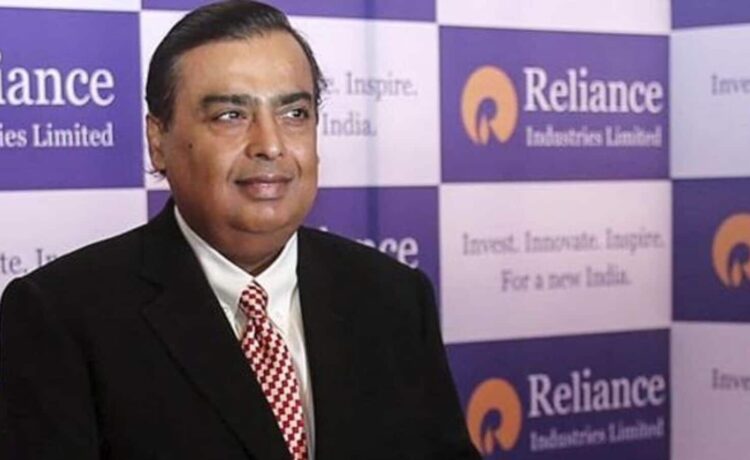MUMBAI: Billionaire Mukesh Ambani-promoted Reliance Industries Ltd. (RIL), the country’s most valuable firm, on Wednesday laid out its plan to become one of the world leaders in new energy, boost its retail business and boslter investments to strengthen Jio’s network and digital capabilities in the coming years.
“Reliance has consolidated its balance sheet after the previous round of capex and is ready for the next level of growth,” Ambani, the RIL chairman, said in the company’s annual report released on Wednesday.
Ambani, with a net worth of more than $109 billion, was ranked Asia’s second-richest man by Bloomberg Billionaires Index in June.
Addressing RIL’s shareholders in its annual report for FY24, Ambani said, “Our new energy and new materials business is poised to become one of the largest providers of green energy globally, as well as a prime contributor towards India’s 2070 net zero target.”
Ambani said the company’s ambitious renewable energy project—the Dhirubhai Ambani Green Energy Giga Complex—in Jamnagar, Gujarat, is progressing rapidly as RIL works towards its goal of attaining net carbon zero by 2035.
Ambani’s net-zero target entails a faster transition than his closest rival and Asia’s richest businessman Gautam Adani.
Adani has set a target to become net zero by 2050 for five of its key portfolio companies — Adani Green Energy, Adani Energy Solutions, Adani Ports & SEZ, ACC and Ambuja Cements.
‘Exploring technologies for capture and recycling of carbon’
Ambani, who has pitched his younger son Anant’s name as the upcoming leader for the group’s green energy business, said, “We are also exploring multiple technologies for capture and recycling of carbon.”
RIL revealed that it signed an agreement last year with the Maharashtra government for 100 kTPA green hydrogen production, with total projected investment of ₹15,000 crore.
The group has already committed billions of dollars towards green energy investments in Gujarat.
Elaborating on its green energy roadmap, RIL said that by 2025 it will establish 20 GW solar capacity for captive needs of round-the-clock power and intermittent energy for green hydrogen.
By 2025, RIL will commence transition from grey to green hydrogen and industrialise sodium ion cell production at a megawatt level.
By 2026 , Jamnagar PV factory will be scaled to 20 GW in a phased manner and a comprehensive battery giga factory is planned to be established.
By 2027, RIL will expand its cell-to-pack manufacturing facility to 50 GWh annually, and by 2030, the company will establish and enable 100 GW of renewable energy.
“The company will also invest in enhancing the value chain, partnerships and future technologies, including upstream and downstream projects,” RIL said in the annual report.
The company will manufacture battery chemicals and components, focus on energy storage system, and build an electrolyser and hydrogen value chain.
India’s dependence on fossil fuels-based energy increases its import bills and results in a foreign exchange drainage.
“India needs to solve this problem to maintain its growth trajectory and reach $32 trillion GDP by 2047,” said RIL.
In the coming years, RIL will develop supply chain locally and reduce the reliance on imports.
Ambani said RIL’s new energy business will play a “pivotal role in the global movement” for adoption of cleaner fuels as the group aims to sell affordable clean energy to the public through the facilities that will be installed in the coming years.
While transitioning from fossil fuels to renewables, the company is maximizing sustainable materials and chemicals as part of its portfolio, it said.
While doing so, RIL aims to be one of the world’s leading new energy and new materials company over a period of 15 years, and in line with its initial commitment to invest ₹75,000 crore in clean energy, RIL has drawn internal targets for enhancing solar capacity for its captive needs, establishing giga factories, and enabling 100 GW of renewable energy by 2030.
Besides new energy business, RIL aims to expand its retail business.
“The retail division is set to broaden its offerings,” RIL said.
RIL will in the coming year focus particularly on underserved areas, with an emphasis on “creating value and expanding its reach”.
“As India’s largest retailer, Reliance Retail is perfectly positioned to serve the consumption needs of our fast-growing economy,” said Ambani, claiming that Reliance Retail’s vision of inclusive development for millions of consumers and merchants has resulted in marquee names investing in RIL’s retail arm at a $100 billion valuation.
RIL’s retail arm opened 1,840 new stores and raised ₹17,814 crore in FY24, while closing the previous fiscal year with a revenue of ₹3.07 trillion, recording a 17.8% year-on-year growth.
RIL’s gross debt was at $38.9 billion last financial year, with standalone gross debt at ₹2.11 trillion and the balance in key subsidiaries including Reliance Retail ( ₹41,317 crore), Reliance Jio ( ₹54,350 crore), and Independent Media Trust Group ( ₹7,317 crore).
Estimated at $951 billion in 2023, India’s retail market is among the top five globally and is expected to become the world’s third-largest by 2030, on the back of increasing urbanisation, rising incomes, expanding female workforce, and an aspirational young population.
Grocery, fashion and lifestyle, and consumer electronics account for over 90% of the retail market.
Reliance Retail expanded its store network to 18,836, covering 79.1 million sq. ft of retail space. RIL said Reliance Retail witnessed record footfalls of over 1 billion in FY24.
RIL aims to transform India’s digital landscape
In the coming years, RIL aims to transform India’s digital landscape with investments in its network and digital technology, primarily through its subsidiary Reliance Jio Infocomm Ltd.
Reliance Jio, with assets of ₹2.36 trillion and profits of ₹20,465.56 crore, contributed 29.79% to RIL’s consolidated net assets and 29.4% to the company’s consolidated profit in FY24.
Within digital services space, Jio’s subscriber base grew by 42.4 million to 481.8 million in FY24, making it India’s top wireless service provider.
Jio has recently completed its so-called True5G network rollout, covering over 1 million 5G cells and capturing about 85% of the country’s 5G capacity.
“Over 108 million subscribers have migrated to True5G, which now handles almost 30% of Jio’s mobility traffic,” said RIL, adding that Jio leads fixed broadband with about 12 million premises connected with JioFiber or JioAirFiber.
“Our constant endeavour to find solutions for India and Indians has helped us spot multiple growth opportunities that have expanded our business portfolio. This portfolio now enables us to touch the lives of millions of Indians through multiple products and offerings,” added Ambani, who, for the fourth year in a row, chose to forgo his salary.
Earlier, Ambani’s remuneration was capped at ₹15 crore since 2008-09.
RIL will be working on raw material security, going forward.
“The company has secured long-term contracts and established strategic relationships, ensuring a consistent and reliable supply of raw materials to maintain uninterrupted production processes,” said RIL, adding that supply chain optimisation remains a key focus for the company, with efforts to ensure a steady raw material supply.
RIL’s shares closed up 0.6% at ₹2,929.20 apiece on the BSE on Wednesday.

















